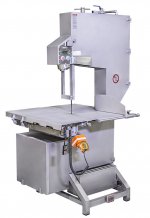ben_r_
Member
- Joined
- Oct 13, 2015
- Messages
- 1,330
Same. Now not only am I concerned about general safety, I also triple check everything to ensure I do not cause an accidental break trip and loose one of my expensive blades!Birdhunter said:I find having the safety device actually makes me more careful.

